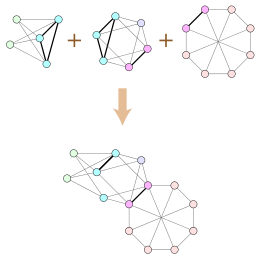

In graph theory, Wagner's theorem is a mathematical forbidden graph characterization of planar graphs, named after Klaus Wagner, stating that a finite graph is planar if and only if its minors include neither K5 (the complete graph on five vertices) nor K3,3 (the utility graph, a complete bipartite graph on six vertices). This was one of the earliest results in the theory of graph minors and can be seen as a forerunner of the Robertson–Seymour theorem.